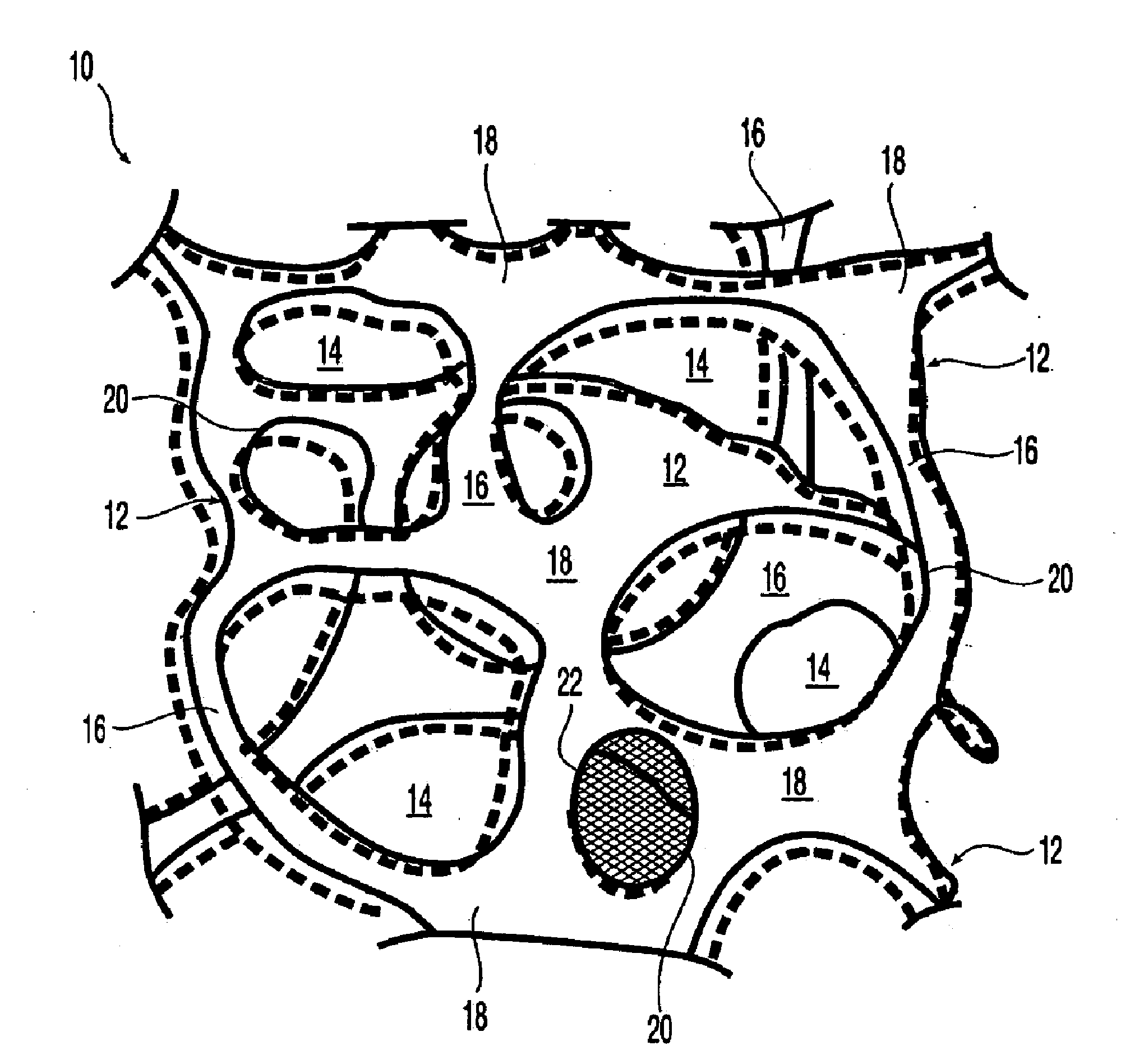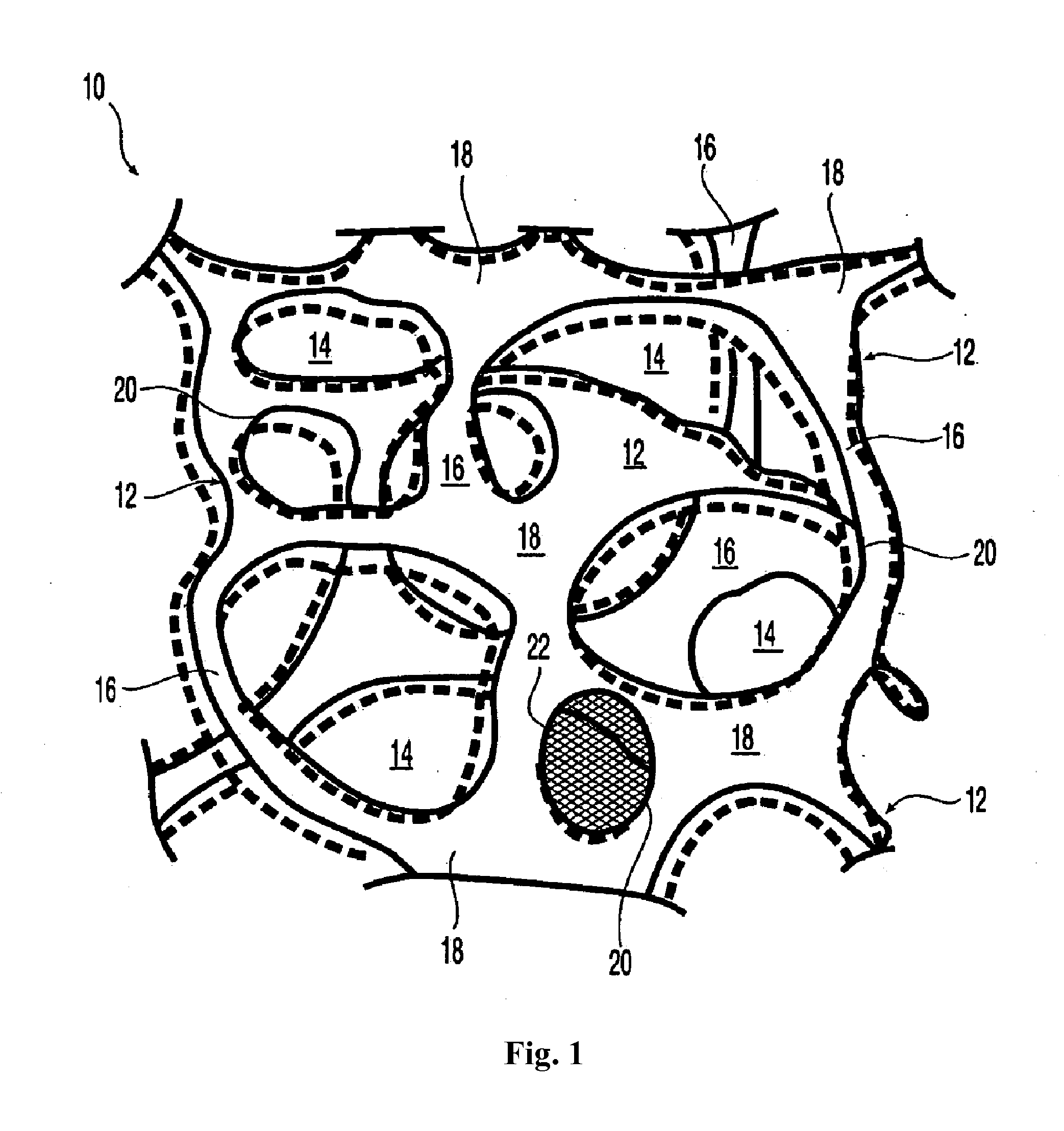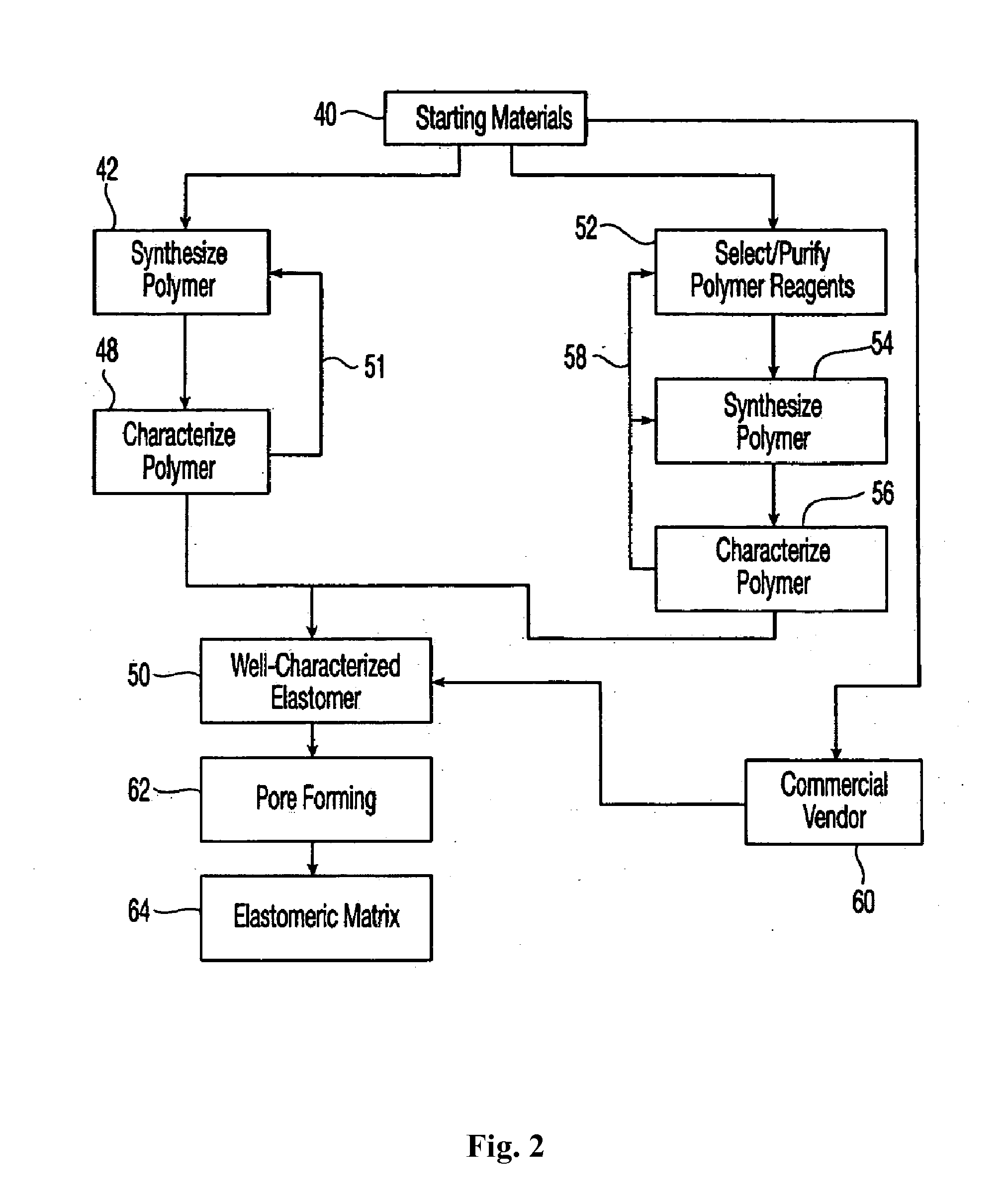Composite mesh devices and methods for soft tissue repair
a mesh device and mesh technology, applied in the field of composite mesh devices, can solve the problems of incomplete solution to the repair of soft tissue defects, and achieve the effect of reducing the adhesion of the device and promoting tissue ingrowth therein
- Summary
- Abstract
- Description
- Claims
- Application Information
AI Technical Summary
Benefits of technology
Problems solved by technology
Method used
Image
Examples
example 1
Synthesis and Properties of Reticulated Elastomeric Matrix for Embodiments of the Invention (Hereinafter “Reticulated Elastomeric Matrix 1”)
[0300]A reticulated cross-linked biodurable elastomeric polycarbonate urea-urethane matrix was made by the following procedure.
[0301]The aromatic isocyanate MONDUR MRS-20 (from Bayer Corporation) was used as the isocyanate component. MONDUR MRS-20 is a liquid at 25° C. MONDUR MRS-20 contains 4,4′-diphenylmethane diisocyanate (MDI) and 2,4′-MDI and has an isocyanate functionality of about 2.2 to 2.3. A diol, poly(1,6-hexanecarbonate) diol (POLY-CD220 from Arch Chemicals) with a molecular weight of about 2,000 Daltons, was used as the polyol component and was a solid at 25° C. Distilled water was used as the blowing agent. The catalysts used were the amines triethylene diamine (33% by weight in dipropylene glycol; DABCO 33LV from Air Products) and bis(2-dimethylaminoethyl)ether (23% by weight in dipropylene glycol; NIAX A-133 from GE Silicones). S...
example 2
Synthesis and Properties of Reticulated Elastomeric Matrix for Other Embodiments of the Invention (Hereinafter “Reticulated Elastomeric Matrix 2”)
[0315]A reticulated cross-linked biodurable elastomeric polycarbonate urea-urethane matrix was made by the following procedure.
[0316]The aromatic isocyanate MONDUR 1488 (from Bayer Corporation) was used as the isocyanate component. MONDUR 1488 is a liquid at 25° C. MONDUR 1488 contains 4,4′-diphenylmethane diisocyanate (MDI) and 2,4′-MDI and has an isocyanate functionality of about 2.2 to 2.3. A diol, poly(1,6-hexanecarbonate) diol (POLY-CD220 from Arch Chemicals) with a molecular weight of about 2,000 Daltons, was used as the polyol component and was a solid at 25° C. Distilled water was used as the blowing agent. The catalysts used were the amines triethylene diamine (33% by weight in dipropylene glycol; DABCO 33LV from Air Products) and bis(2-dimethylaminoethyl)ether (23% by weight in dipropylene glycol; NIAX A-133 from Momentive). Sili...
example 3
Fabrication of Composite Made from Reticulated Elastomeric Matrix Reinforced with 2-Dimensional Mesh Reinforcement
[0329]The process for manufacturing implantable composite device for embodiments of the invention is described next. Reticulated Elastomeric Matrix 2 was made following the procedures described in the foregoing Example 2. Implantable devices, shaped as rectangular sheets having approximate dimensions of 150 mm in length, 120 mm in width and 0.9 mm in thickness, were cut by machining from Reticulated Elastomeric Matrix 2. Two sheets or substrates were machined.
[0330]A knitted polypropylene monofilament fibers (diameters approximately 0.10 mm) in a mesh configuration having a thickness of approximately 0.41 mm, largest grid size ˜1.4 mm×1.2 mm and a Mesh Areal Density of 46-54 g / m2 was used as the 2 dimensional mesh reinforcement. The PP mesh was sized similar to the machined Reticulated Elastomeric Matrix 2.
[0331]A Silicone adhesive (Nusil™ MED2-4213) was used to bond the...
PUM
| Property | Measurement | Unit |
|---|---|---|
| Percent by mass | aaaaa | aaaaa |
| Fraction | aaaaa | aaaaa |
| Fraction | aaaaa | aaaaa |
Abstract
Description
Claims
Application Information
 Login to View More
Login to View More - R&D
- Intellectual Property
- Life Sciences
- Materials
- Tech Scout
- Unparalleled Data Quality
- Higher Quality Content
- 60% Fewer Hallucinations
Browse by: Latest US Patents, China's latest patents, Technical Efficacy Thesaurus, Application Domain, Technology Topic, Popular Technical Reports.
© 2025 PatSnap. All rights reserved.Legal|Privacy policy|Modern Slavery Act Transparency Statement|Sitemap|About US| Contact US: help@patsnap.com



